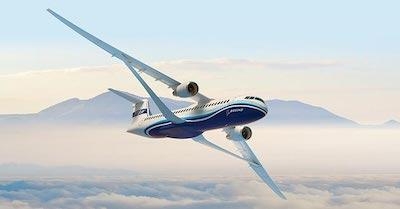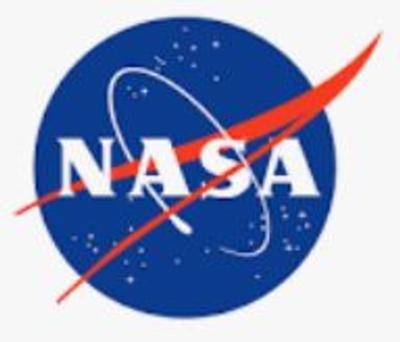Full-Scale Sustainable Flight Demonstrator Imminent
NASA and Boeing set forth on Monday, 12 June 2023, that the aircraft to be produced through the space agency’s Sustainable Flight Demonstrator project has been designated the X-66A by the U.S. Air Force.

By dint of the new X-plane, NASA and Boeing seek to inform the design of a new generation of more sustainable narrow-body commercial aircraft—the veritable workhorses of the global airline industry.
In cooperation with NASA, Boeing will build, test, and fly a full-scale demonstrator aircraft featuring a transonic truss-braced wing—an extraordinarily high aspect-ratio (read long and thin) wing stabilized, bilaterally, by diagonal struts—after the fashion of Cessna’s 172 or de Havilland’s DHC-6 Twin Otter.
NASA Administrator Bill Nelson stated: “At NASA, our eyes are not just focused on stars but also fixated on the sky. The Sustainable Flight Demonstrator builds on NASA’s world-leading efforts in aeronautics as well as climate. The X-66A will help shape the future of aviation, a new era where aircraft are greener, cleaner, and quieter, and create new possibilities for the flying public and American industry alike.”
The X-66A is the first X-plane funded and designed for the express purpose of helping the United States actualize the de rigueur ambition of reducing aviation greenhouse gas emissions to net-zero—an objective enshrined in the White House’s U.S. Aviation Climate Action Plan—a fanciful amphigory heavy on hyperbole and exceedingly light on substance, veracity, and plausibility.
Bob Pearce, associate administrator for NASA’s Aeronautics Research Mission Directorate remarked: “To reach our goal of net-zero aviation emissions by 2050, we need transformative aircraft concepts like the ones we’re flying on the X-66A.”
Mr. Pearce, who announced the new X-plane’s designation at the American Institute of Aeronautics and Astronautics Aviation Forum in San Diego, added: “With this experimental aircraft, we’re aiming high to demonstrate the kinds of energy-saving, emissions-reducing technologies the aviation industry needs.”
NASA and Boeing sought the X-plane designation shortly after the space agency announced in January 2023 that it had awarded the Sustainable Flight Demonstrator contract to the aerospace titan. X-Plane status denotes a research application and is conferred by the USAF upon programs established to devise and build revolutionary aircraft. With few exceptions, X-planes exist solely to test concepts and technologies. Such aircraft do not serve as production prototypes.
Boeing Chief Technology Officer (CTO) Todd Citron asserted: “We’re incredibly proud of this designation, because it means that the X-66A will be the next in a long line of experimental aircraft used to validate breakthrough designs that have transformed aviation. With the learnings gained from design, construction, and flight-testing, we’ll have an opportunity to shape the future of flight and contribute to the decarbonization of aerospace.”
The X-66A will be plied to the complex business of validating technologies salient to the Transonic Truss-Braced Wing configuration. Subject architecture, when combined with anticipated advancements in propulsion systems, materials, and systems layout, could reduce extant, best-in-class aircraft fuel consumption by as much as thirty-percent.
Owing to their instrumentality to short (less-than 540-nautical-mile) and medium (800 to 2,200-nautical-mile) haul routes, narrow-body aircraft—known also as single-aisle aircraft—account for nearly half of worldwide aviation emissions. Reducing the CO2 emissions of such aircraft by thirty-percent would profoundly and positively benefit the planet and those residing thereupon.

NASA’s X-plane history dates to the 1940s—when its predecessor agency, the National Advisory Committee for Aeronautics (NACA) jointly created an experimental aircraft program with the U.S. Air Force and Navy. The X-66A is the latest in a long and august line of NASA X-planes.
NASA has a Funded Space Act Agreement with Boeing through which the agency will invest $425-million in the Sustainable Flight Demonstrator over the next seven years. The remainder of the undertaking’s funding—estimated at approximately $725-million, will be anted-up by Boeing and its industry partners. NASA will also contribute technical expertise and facilities.
The Sustainable Flight Demonstrator project falls under the auspices of NASA’s Integrated Aviation Systems Program and is a key element of the agency’s Sustainable Flight National Partnership—a venture comprising NASA, aerospace industry collaborators, academia, and other U.S. federal agencies—which focuses on the development of new sustainable aviation technologies.
 Classic Aero-TV: In Praise of Alabamas Patriot Aircraft USA
Classic Aero-TV: In Praise of Alabamas Patriot Aircraft USA NTSB Final Report: Cirrus Design Corp SR22
NTSB Final Report: Cirrus Design Corp SR22 ANN's Daily Aero-Term (12.21.25): Dead Reckoning
ANN's Daily Aero-Term (12.21.25): Dead Reckoning ANN's Daily Aero-Linx (12.21.25)
ANN's Daily Aero-Linx (12.21.25) Aero-News: Quote of the Day (12.21.25)
Aero-News: Quote of the Day (12.21.25)




